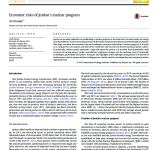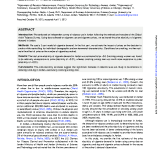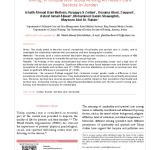Families and the Handicapped in Northern Jordan

The image of the Arab family that is frequently presented in the ethnographic literature (cf. Fakhouri,1984; Geertz,1979:333) is that of a large household containing many nuclear families whose members interact frequently and intensively and share the burdens of daily life. Such an image may not be wrong so much as it is overgeneralized. When we perceive Arab families through this image we tend to recall the interests and opportunities - wedding celebrations,religious holidays (cf. Antoun,1968),defense of family honor (cf. Antoun,1972) - which bring family members together and forget the issues - politics and inheritance (cf. Shunnaq's article in this issue) - which can drive them apart. One such divisive factor can be
misfortune; more specifically,the development of immobilizing handicaps in a family's children. One would expect that handicaps can generate stress and division in Arab families just as they do in families in other parts of the world.
Studies of families with handicapped children outside of the Arab world have confirmed the common-sense assumption that such families experience greater stress than families whose children are not handicapped (McKaig et al.,1986; Murphy 1982). Many such studies (ex. Covert,1988; Singer and Irvin,1989) are designed to identify the policy implications of home care for the handicapped and make recommendations about how the families of the handicapped should be supported by public agencies. Almost no research has been done on how - or,indeed,whether - Arab families cope with childhood handicaps.


